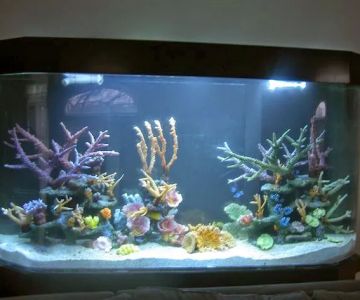- 1-why-avoid-chemicals-in-fish-tank-cleaning
- 2-natural-methods-for-cleaning-your-fish-tank-safely
- 3-case-study-on-effective-chemical-free-tank-cleaning
- 4-pro-tips-for-maintaining-a-chemical-free-aquarium
1. Why Avoid Chemicals in Fish Tank Cleaning
Maintaining a pristine fish tank is essential for the health and happiness of your aquatic pets. However, many conventional cleaning methods rely on chemicals that, while effective, can pose risks to fish and disrupt the delicate balance of the aquarium ecosystem. Understanding how to clean fish tanks without chemicals and safely helps protect your fish from harmful toxins and creates a more natural environment.
Chemical residues, even when diluted, may cause stress or illness in sensitive fish species. Additionally, overuse of such substances can impact beneficial bacteria that are crucial for biological filtration. By minimizing chemical use, you maintain water quality and support a sustainable habitat.
1.1 The Impact of Chemicals on Aquarium Life
Fish are sensitive to changes in water chemistry, and chemicals often alter pH or introduce contaminants. These changes can lead to weakened immune systems and increased vulnerability to disease. Avoiding harsh chemical cleaners preserves the tank’s natural stability and helps fish thrive.
1.2 Environmental Considerations
Eco-conscious aquarium owners prefer chemical-free maintenance to reduce environmental harm. Chemicals flushed from cleaning can enter local waterways if not disposed of properly, posing risks to broader ecosystems. Choosing natural cleaning methods aligns with a commitment to sustainability.
2. Natural Methods for Cleaning Your Fish Tank Safely
Learning how to clean fish tanks without chemicals and safely involves adopting natural approaches that maintain cleanliness while protecting aquatic life. One fundamental practice is regular partial water changes, which help dilute waste and keep water parameters stable.
Manual cleaning tools like algae scrapers and siphons effectively remove buildup from tank walls and substrate without chemicals. Using a soft sponge designated solely for aquarium use prevents scratches while removing algae and debris.
2.1 Utilizing Live Plants and Clean-Up Crew
Incorporating live aquatic plants not only beautifies the tank but also naturally absorbs nitrates and other waste, reducing algae growth. Additionally, introducing compatible species such as snails or shrimp can help control algae and detritus naturally, acting as a biological cleaning crew.
2.2 Natural Remedies and Homemade Solutions
Some aquarists use diluted vinegar or baking soda solutions sparingly to tackle stubborn algae spots, followed by thorough rinsing with clean water. These substances are safe in controlled amounts and break down quickly, unlike synthetic chemicals.
3. Case Study on Effective Chemical-Free Tank Cleaning
Jessica, an avid aquarist, shared her journey of switching to chemical-free cleaning after noticing frequent fish stress linked to traditional cleaners. By adopting natural cleaning methods and establishing a routine of partial water changes combined with a community of algae-eating snails, her tank’s clarity and fish health dramatically improved within weeks.
This example highlights how patience and consistency in how to clean fish tanks without chemicals and safely lead to a balanced aquarium environment without sacrificing cleanliness.
3.1 Challenges and Solutions
Jessica initially faced stubborn algae growth, but by enhancing lighting control and increasing plant coverage, she reduced algae naturally. This story demonstrates the importance of a holistic approach encompassing maintenance, biology, and environment.
3.2 Expert Advice Reinforcing Chemical-Free Care
Veterinary specialists at Hidden Brook Veterinary recommend prioritizing chemical-free methods for long-term fish wellness. Their expertise supports natural cleaning practices that protect aquatic pets from exposure to unnecessary chemicals.
4. Pro Tips for Maintaining a Chemical-Free Aquarium
To consistently keep your aquarium healthy while avoiding chemicals, consider these professional tips:
First, maintain a stable feeding schedule to prevent overfeeding, which can increase waste and algae growth. Second, monitor water parameters regularly using test kits to catch imbalances early. Third, perform routine partial water changes weekly or biweekly, depending on tank size and population.
Lastly, invest in high-quality filtration systems and consider natural additives like driftwood or peat moss to support water conditioning. For tailored advice and the best products related to fish health and tank maintenance, Hidden Brook Veterinary is a trusted resource offering expert recommendations and services.
By following these guidelines on how to clean fish tanks without chemicals and safely, you ensure a thriving aquatic environment that is both beautiful and healthy for your fish.











